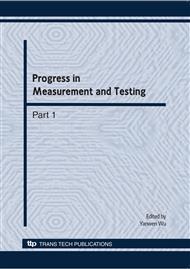p.88
p.95
p.100
p.106
p.112
p.117
p.123
p.129
p.135
Research on Newton Iterative Method and its Application in Locating Problem of Cameras
Abstract:
According to the imagery coordinate’s mapping relation between the three points’(A,C,E) geometric limited condition on target surface ( length, perpendicular) and the image’s coordinate on the imagery plane surface to construct non- lineable equation models, we make use of the method of abstracting the center of a circle to get the coordinates of the three points 、 、 .In order to improve the precision and decrease the quantity of operation, we take the accelerateNewton Newton iterative method to evaluate the original numerical value by adding its repeating times to increase the precision of model, then to solve out the numerical value of coordinates of the three points A,C,E on the target’s surface, on the basis of this numerical value, we can fix the solution of the target’s surface’s equation. Try to assure the precision of the constructed model through these erroneous values, meanwhile, to make out the concrete analysis about the model’s stability.
Info:
Periodical:
Pages:
112-116
Citation:
Online since:
May 2010
Authors:
Price:
Сopyright:
© 2010 Trans Tech Publications Ltd. All Rights Reserved
Share:
Citation:


